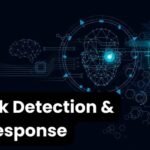As enterprises increasingly move workloads, applications, and sensitive data into the cloud, traditional security models no longer provide adequate protection. The modern cloud environment is dynamic, distributed, and heavily reliant on SaaS, IaaS, and PaaS platforms. While Cloud Access Security Brokers (CASBs) help enforce security policies across cloud services, they are only one piece of the larger puzzle. To achieve full visibility and proactive defense, organizations are now combining CASBs with Extended Detection and Response (XDR).
This integration delivers a holistic, multi-layered approach that not only protects cloud assets but also accelerates threat detection and incident response across hybrid IT environments. In this blog, we’ll explore how XDR works with CASBs, why this integration matters, and the benefits organizations can gain from aligning the two technologies.
What is a CASB?
A Cloud Access Security Broker (CASB) acts as a control point between users and cloud services. It enforces an organization’s security, compliance, and governance policies by monitoring activity and applying rules to cloud-based interactions.
Key CASB capabilities include:
- Visibility – Identifying sanctioned and unsanctioned (shadow IT) cloud services in use.
- Access Control – Enforcing authentication, authorization, and conditional access policies.
- Data Security – Protecting sensitive information through encryption, tokenization, and DLP (data loss prevention).
- Threat Protection – Detecting anomalous activity in cloud services that may indicate compromised accounts or insider threats.
- Compliance – Ensuring adherence to regulatory requirements like GDPR, HIPAA, and PCI DSS.
While CASBs provide deep insights into cloud traffic and enforce policies, they primarily operate within the cloud layer. Threats that span endpoints, networks, and other infrastructure layers require broader detection capabilities—this is where XDR complements CASBs.
What is XDR?
Extended Detection and Response (XDR) is a unified cybersecurity platform that consolidates visibility and response capabilities across endpoints, networks, email, servers, and cloud workloads. Unlike siloed tools, XDR integrates telemetry from multiple sources to provide context-rich detections and automated responses.
Core XDR features include:
- Cross-layer visibility – Aggregating signals from endpoints, servers, cloud workloads, and network traffic.
- Advanced analytics – Leveraging AI, machine learning, and behavioral models to identify sophisticated threats.
- Automated response – Streamlining remediation actions such as quarantining endpoints, blocking IPs, or revoking user sessions.
- Threat intelligence integration – Enriching alerts with global attack insights to reduce false positives.
How XDR and CASBs Work Together
When integrated, XDR and CASBs create a comprehensive security fabric that covers both cloud-specific risks and broader enterprise threats. Here’s how they complement each other:
1. Unified Visibility Across Cloud and On-Premises
- CASBs provide visibility into user interactions with SaaS applications (e.g., Office 365, Salesforce, Google Workspace).
- XDR extends this by correlating cloud events with endpoint and network activities, detecting cross-channel attack campaigns such as phishing-to-cloud account compromise.
2. Strengthened Identity and Access Monitoring
- CASBs flag suspicious logins (e.g., impossible travel, anomalous geolocations).
- XDR correlates these with endpoint malware detections or lateral movement attempts, revealing multi-stage attacks involving stolen credentials.
3. Improved Data Protection
- CASBs enforce DLP policies in SaaS apps, ensuring sensitive data isn’t uploaded or shared externally.
- XDR adds another layer by monitoring endpoints and email systems for attempts to exfiltrate the same data through non-cloud channels.
4. Faster Threat Detection and Response
- CASBs might detect a compromised cloud account but lack full incident response automation.
- XDR can automatically revoke tokens, disable accounts, isolate infected endpoints, and block malicious IPs, reducing mean time to respond (MTTR).
5. Regulatory and Compliance Alignment
- CASBs ensure data usage in cloud services complies with frameworks like GDPR and HIPAA.
- XDR maintains audit trails across the entire IT stack, supporting compliance reporting and forensic investigations.
Real-World Use Case Scenarios
Scenario 1: Stopping Account Takeover
- CASB detects a suspicious login to Microsoft 365 from an unusual location.
- XDR cross-checks with endpoint logs and finds malware on the user’s laptop that harvested credentials.
- Automated response: XDR forces a password reset, blocks the malicious IP, and isolates the compromised endpoint.
Scenario 2: Preventing Data Leakage
- CASB flags an employee trying to upload sensitive HR records to a personal Google Drive account.
- XDR identifies the same user attempting to send data through unauthorized email channels.
- Automated response: XDR enforces DLP rules, alerts security teams, and restricts the user’s cloud access until reviewed.
Scenario 3: Detecting Multi-Vector Ransomware
- CASB notices mass file downloads from a cloud storage app.
- XDR simultaneously detects lateral movement across endpoints.
- Automated response: XDR blocks the attacker’s IP, halts file transfers, and quarantines impacted devices before ransomware spreads further.
Benefits of XDR + CASB Integration
- Comprehensive Visibility – End-to-end monitoring across endpoints, networks, and cloud services.
- Improved Threat Detection – Cross-correlation of cloud and non-cloud telemetry reveals advanced attack patterns.
- Faster Incident Response – Automated actions reduce dwell time and limit damage.
- Better Data Security – Unified enforcement of DLP and compliance policies across all environments.
- Reduced Tool Fatigue – A consolidated platform minimizes the burden of managing multiple, siloed security solutions.
Best Practices for Deploying XDR with CASBs
- Choose Open XDR Platforms: Ensure the XDR solution integrates seamlessly with leading CASBs like Netskope, Microsoft Defender for Cloud Apps, or Palo Alto Networks Prisma.
- Centralize Policy Management: Align CASB policies (access, DLP, compliance) with broader XDR detection rules.
- Automate Response Workflows: Define playbooks that trigger automated remediation actions across both CASB and XDR.
- Continuously Monitor Shadow IT: Use CASBs to detect unsanctioned apps and XDR to analyze associated risks.
- Leverage Threat Intelligence: Enrich CASB detections with XDR’s global threat intelligence feeds for context-aware decision-making.
Conclusion
Cloud adoption has transformed the way organizations operate—but it has also expanded the attack surface. While CASBs provide deep visibility and control over cloud applications, they are not enough on their own to stop advanced, multi-vector threats. By combining CASBs with XDR platforms, organizations gain a unified, intelligent, and automated defense framework that strengthens data protection, accelerates threat detection, and streamlines incident response across hybrid and multi-cloud environments.
In an era where cloud security breaches can have devastating consequences, the integration of XDR and CASBs is no longer optional—it’s essential for building a proactive, resilient cybersecurity strategy.


